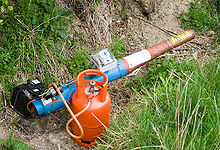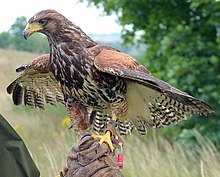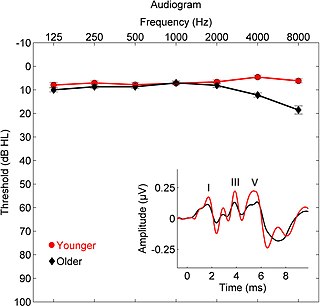
The absolute threshold of hearing (ATH), also known as the absolute hearing threshold or auditory threshold, is the minimum sound level of a pure tone that an average human ear with normal hearing can hear with no other sound present. The absolute threshold relates to the sound that can just be heard by the organism. The absolute threshold is not a discrete point and is therefore classed as the point at which a sound elicits a response a specified percentage of the time.

Audio system measurements are a means of quantifying system performance. These measurements are made for several purposes. Designers take measurements so that they can specify the performance of a piece of equipment. Maintenance engineers make them to ensure equipment is still working to specification, or to ensure that the cumulative defects of an audio path are within limits considered acceptable. Audio system measurements often accommodate psychoacoustic principles to measure the system in a way that relates to human hearing.

A car alarm is an electronic device installed in a vehicle in an attempt to discourage theft of the vehicle itself, its contents, or both. Car alarms work by emitting high-volume sound when the conditions necessary for triggering it are met. Such alarms may also cause the vehicle's headlights to flash, may notify the car's owner of the incident via a paging system, and may interrupt one or more electrical circuits necessary for the car to start. Although inexpensive to acquire and install, the effectiveness of such devices in deterring vehicle burglary or theft when their only effect is to emit sound appears to be negligible.
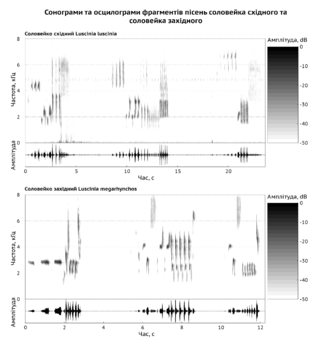
Bioacoustics is a cross-disciplinary science that combines biology and acoustics. Usually it refers to the investigation of sound production, dispersion and reception in animals. This involves neurophysiological and anatomical basis of sound production and detection, and relation of acoustic signals to the medium they disperse through. The findings provide clues about the evolution of acoustic mechanisms, and from that, the evolution of animals that employ them.

A long-range acoustic device (LRAD), acoustic hailing device (AHD) or sound cannon is a specialized loudspeaker that produces sound at high power for communicating at a distance. It has been used as a method of crowd control, which has caused permanent hearing damage, having an extremely high decibel capacity. Other uses have included for negotiations in siege situations to deal with piracy at sea; for mass notification during natural disasters or other emergencies; and by defense forces, including several navies.

A gun barrel is a crucial part of gun-type weapons such as small firearms, artillery pieces, and air guns. It is the straight shooting tube, usually made of rigid high-strength metal, through which a contained rapid expansion of high-pressure gas(es) is used to propel a projectile out of the front end (muzzle) at a high velocity. The hollow interior of the barrel is called the bore, and the diameter of the bore is called its caliber, usually measured in inches or millimetres.

Sonic and ultrasonic weapons (USW) are weapons of various types that use sound to injure or incapacitate an opponent. Some sonic weapons make a focused beam of sound or of ultrasound; others produce an area field of sound. As of 2023 military and police forces make some limited use of sonic weapons.

Pest control is the regulation or management of a species defined as a pest; such as any animal, plant or fungus that impacts adversely on human activities or environment. The human response depends on the importance of the damage done and will range from tolerance, through deterrence and management, to attempts to completely eradicate the pest. Pest control measures may be performed as part of an integrated pest management strategy.
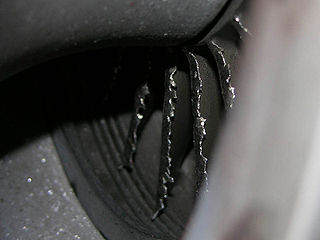
In aviation and aerospace, the term foreign object damage (FOD) refers to any damage to an aircraft attributed to foreign object debris, which is any particle or substance, alien to an aircraft or system which could potentially cause damage to it.
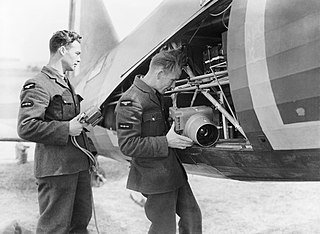
In all forms of aviation, ground crew are personnel that service aircraft while on the ground, during routine turn-around; as opposed to aircrew, who operate all aspects of an aircraft whilst in flight. The term ground crew is used by both civilian commercial airlines and in military aviation.

A bird strike is a collision between an airborne animal and a moving vehicle. The term is also used for bird deaths resulting from collisions with structures, such as power lines, towers and wind turbines.

A blaster is a fictional gun that appears in the Star Wars universe. Lucasfilm defines the blaster as "ranged energized particle weaponry". Many blasters mirror the appearance, functions, components, operation, and usage of real life firearms. They are also said to be able to be modified with certain add-ons and attachments, with Han Solo's blaster being said to be illegally modified to provide greater damage without increasing power consumption.
Radio activated guard (RAG) boxes are experimental pest control devices intended to deter wolves from preying on livestock. Specifically, they are designed to work against wolves which have been fitted with radio tracking collars prior to being re-released into the wild. The device was conceived by Edward Cummings, a rancher from Montana, who suggested that a hazing device could be tuned to a radio collar's frequency; after discussions with ranchers, the specifications of the device were designed and prototyped by Dr. John Shivik, then with the United States Department of Agriculture Wildlife Services, National Wildlife Research Center. Very few of the devices have been produced for commercial sale.
Noise regulation includes statutes or guidelines relating to sound transmission established by national, state or provincial and municipal levels of government. After the watershed passage of the United States Noise Control Act of 1972, other local and state governments passed further regulations.

An animal repellent consists of any object or method made with the intention of keeping animals away from personal items as well as food, plants or yourself. Plants and other living organisms naturally possess a special ability to emit chemicals known as semiochemicals as a way to defend themselves from predators. Humans purposely make use of some of those and create a way to repel animals through various forms of protection.

Bird control or bird abatement involves the methods to eliminate or deter pest birds from landing, roosting and nesting.

A bird control spike, also known as an anti-roosting spike, pigeon spike, or roost modification, is a device consisting of long, needle-like rods used for bird control. Bird control spikes can be attached to building ledges, street lighting, and commercial signage to prevent wild or feral birds from perching or roosting. Birds can produce large quantities of unsightly and unhygienic feces, and some birds have very loud calls that can be inconvenient for nearby residents, especially at night. As a result, bird control spikes are used to deter these birds without causing them harm or killing them. Some birds have used the spikes in their nests.
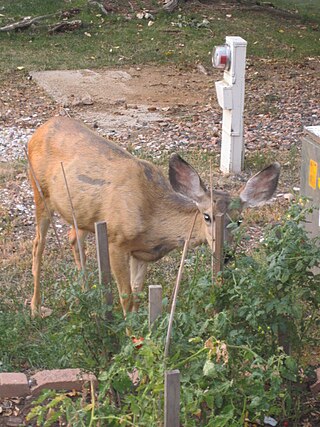
Nuisance wildlife management is the selective removal of problem individuals or populations of specific species of wildlife. Other terms for the field include wildlife damage management, wildlife control, and animal damage control. Some wild animal species may get used to human presence, causing property damage or risking the transfer of diseases (zoonoses) to humans or pets. Many wildlife species coexist with humans very successfully, such as commensal rodents which have become more or less dependent on humans.
A cat repeller is a device or substance used to discourage cats from entering an area, or to encourage them to leave if they do enter. Such deterrents are most commonly used by gardeners, in order to prevent damage to their gardens, to avoid cat feces, or to protect birds.
Acoustic harassment and acoustic deterrents are technologies used to keep animals and in some cases humans away from an area. Applications of the technology are used to keep marine mammals away from aquaculture facilities and to keep birds away from certain areas. The devices have also been employed to keep marine mammals away from fishing nets. The devices are known as acoustic harassment devices (AHDs) and acoustic deterrent devices, which are smaller AHDs or intended as an awareness tool to warn species to the presence of danger rather than as a tool of harassment at a much louder level.



